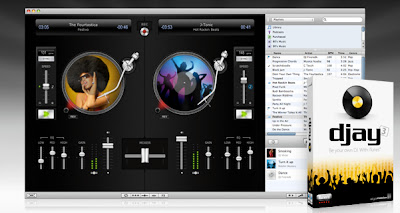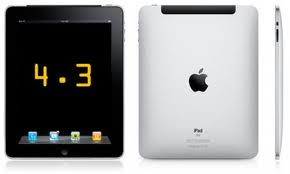Apple’s iPad 2, which was announced in a special event March 2, is expected to hit store shelves March 11. When it does, customers will have the unenviable task of choosing either Apple’s latest tablet or the many other tablets from competing manufacturers that are vying for their hard-earned cash. Although last year, the decision to choose the iPad was an easy one, in 2011, it’s not as easy as one thinks. That’s especially true if customers decide to opt for either the iPad 2 or the Motorola Xoom.

The former is likely the front runner, given its predecessor’s success, but the Xoom is also a fine option. It delivers a number of solid features that consumers would be quite happy with. Even better, it does so at a price that’s quite competitive.But for those still on the fence, let’s just make it easy: opt for the Motorola Xoom. Yes, the iPad 2 looks like a nice device on paper, but that doesn’t necessarily mean it can live up the appeal of the Xoom. The average consumer could do worse than to pick up Motorola’s tablet over Apple’s.
The slightly larger display
It might be a few factions of an inch difference, but it’s important for consumers to consider that the Motorola Xoom has a slightly larger display than Apple’s iPad. The Xoom features a 10.1-inch screen, while the iPad comes with a 9.7-inch display. On paper, that might not seem like much. But when one holds the devices in their hands and compares them, it’s quite noticeable. The extra screen estate comes in handy when viewing video or surfing the Web. Keep that in mind.
Upgrade to 4G
Motorola’s Xoom currently only offers customers the ability to connect to Verizon’s 3G network when they’re away from home. However, Motorola Mobility has said that it will offer a free upgrade to 4G in the coming months. After that upgrade is in place, customers will be able to connect to Verizon’s ultra-high-speed network. Apple iPad 2 owners, on the other hand, won’t have that luxury. While Xoom owners will be surfing the Web at ultra-high speed, iPad 2 customers will be stuck on 3G.
Android 3.0 Honeycomb is promising
When Apple CEO Steve Jobs showed off the iPad 2 March 2, he said that the platform would come with iOS 4.3, an updated version of the mobile-operating system Apple launched last year. The Xoom, on the other hand, ships with Google Android 3.0 Honeycomb. That platform, which was unveiled this year, comes with a number of important upgrades, including a reworked design, much better browsing, improved multitasking, and several other features. Those who have gotten their hands on the platform say it’s a sizable upgrade over Android 2.2. Due to Google’s desire to make the operating system more desktop-like in its functionality, iOS 4.3 might look rather obsolete next to it.
Don’t believe the apps hype
Apple was quick to point out at its March 2 event that it has 65,000 iPad applications available to customers. The company said that the Android Market currently has about 100 applications available to tablet owners. However, Apple failed to point out that more and more developers are moving to Android to bring their applications to tablets. Over time, the discrepancy in mobile applications won’t be nearly as great as Apple would like users to believe. It’s a problem now, but it won’t be a major issue by the end of the year.
The superior browsing experience
There’s no comparing the browsing experience on the Motorola Xoom to that of the iPad 2. Apple’s iPad 2 comes with the same, basic Mobile Safari experience customers have grown accustomed to. Apple’s iOS 4.3 improves browsing a little by increasing surfing efficiency, but it does nothing to answer the vastly improved Chrome browser in Honeycomb. Not only is surfing much faster than in previous versions of the software, but the software has real tabbed browsing, like users would find on the desktop. It also has Google’s Incognito Mode, auto-fill options, and many other services typically found in desktops. Simply put, it’s the best mobile-browsing experience on the market.
Where’s the advantage?
A quick glance at the basic specs of both the Xoom and the iPad 2 reveals no sizable advantages for Apple. Both devices come with a dual-core processor, have dual cameras, and offer WiFi and 3G connectivity. Both platforms record video, snap photos and support video conferencing. In other words, the key features are basically the same. The iPad 2’s most important advantage might simply be that it comes from Apple.
The price is right
Much has been made about the price of the Motorola Xoom. Those who support Apple products say that Motorola’s option, which starts at $799 with no contract, is quite expensive, considering the iPad 2 starts at $499 with WiFi and $629 for WiFi and 3G. But what those folks seems to forget is that the most relevant competitor to the Xoom, the iPad 2 featuring 32GB of storage and 3G connectivity, goes for $729. Moreover, those who are fine with entering into a two-year contract with Verizon can pay just $599.99 for the Xoom. As one can see, the Xoom’s pricing is right where it should be.
The battery consideration
Since tablets are mobile devices , battery life matters quite a bit. Although Steve Jobs was quick to tout the iPad 2’s battery life, it’s important to note that the Xoom features up to 10 hours of life surfing the Web over WiFi and up to nine hours on 3G. The iPad 2 has 10 hours of battery life over WiFi and nine hours of battery life on 3G. So, if battery life matters, Apple’s iPad 2 doesn’t seem to hold an advantage.
The extra ports matter
The Xoom comes with an HDMI (High-Definition Multimedia Interface) port and USB port for customers to pump video out of the device, connect other devices and more. The iPad 2, on the other hand, lacks those ports. Apple said that it will sell an HDMI-out adapter, but that costs customers an additional fee that they shouldn’t have to pay. After all, considering how much users are spending on a new tablet, wouldn’t an HDMI out and USB port be expected?
The mobility factor isn’t major
It’s important to note that the iPad 2 is both thinner and lighter than the Motorola Xoom. Since tablets are mobile devices, that might matter to some folks. But it probably shouldn’t matter as much as they think. The differences aren’t major. For most customers, the Xoom will be quite easy to carry around in a bag or purse. Would it be nice if it had a slightly smaller footprint and less heft to it? Sure. But it’s not enough of a problem to be a deal-breaker. And it certainly isn’t enough of a problem that customers should ignore its other benefits and opt for the iPad 2.











